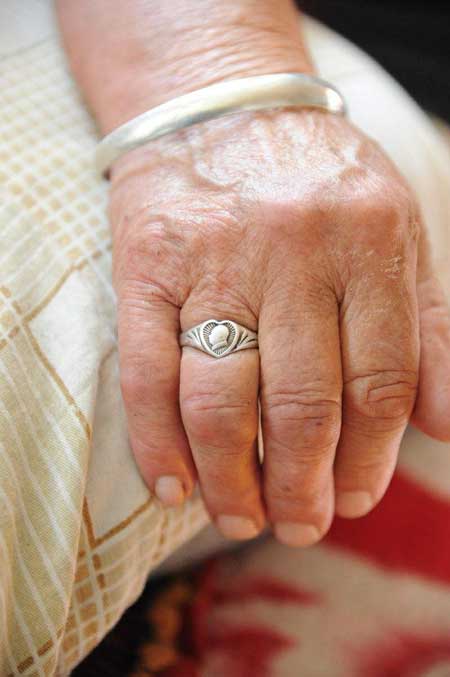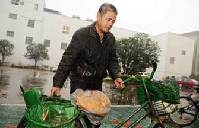Mao's legacy lives on
 |
|
An image of Mao on the ring of an ethnic Russian woman in Hulunbuir, the Inner Mongolia autonomous region. |
Passion through the lens
Sun Dahong, a photographer who has published an album of Mao fans of many ethnicities, argues that the modern passion for Mao has nothing to do with a personality cult.
"It's not a political fervor that creates blind followers like those during the 'cultural revolution', but a kind of spontaneous affection or emotion that has sprouted at the grassroots and passed from generation to generation," says Sun, a former provincial deputy police chief of Yunnan.
Sun cites the example of an ethnic Hani herb-store owner in Kunming he met when working on the album. The middle-aged man has kept a Mao portrait for 30 years that he inherited from his grandfather, previously a headman who was invited to Beijing and met Mao after liberation.
The man moved to Kunming from Pu'er for business 18 years ago, and now the Mao portrait hangs in his herb store. "I always take it with me wherever I go," the man told Sun.
Sun says he has witnessed much Mao worship among ethnic minorities. As a police officer, he has been to many areas of Yunnan, home to 25 ethnic minority groups, and he often sees Mao's image in the homes of local people, sometimes alongside their ancestors' shrines.
The idea of shooting an album of Mao fans occurred to Sun when, during the Lantern Festival in February 2011, he photographed three old women in Chengjiang county of Yunnan talking merrily under a portrait of Mao.
His collection of more than 90 photos was exhibited in Beijing from Dec 22 to 28 to celebrate the 120th anniversary of Mao's birth. He says that through his photos he would like to share with people of all ethnic groups a feeling of affection, respect and admiration for New China's founding father.
Sun spent nearly three years traveling across Yunnan and other parts of the country to capture the images, which cover Mao's admirers from all the 56 ethnic groups, including the fishing tribe of Hezhe people in the northernmost Heilongjiang province and the Muslim Tatars in far-flung Xinjiang in the west.
Sun reveals that it was more than a journey for art but also a process of soul searching.


















